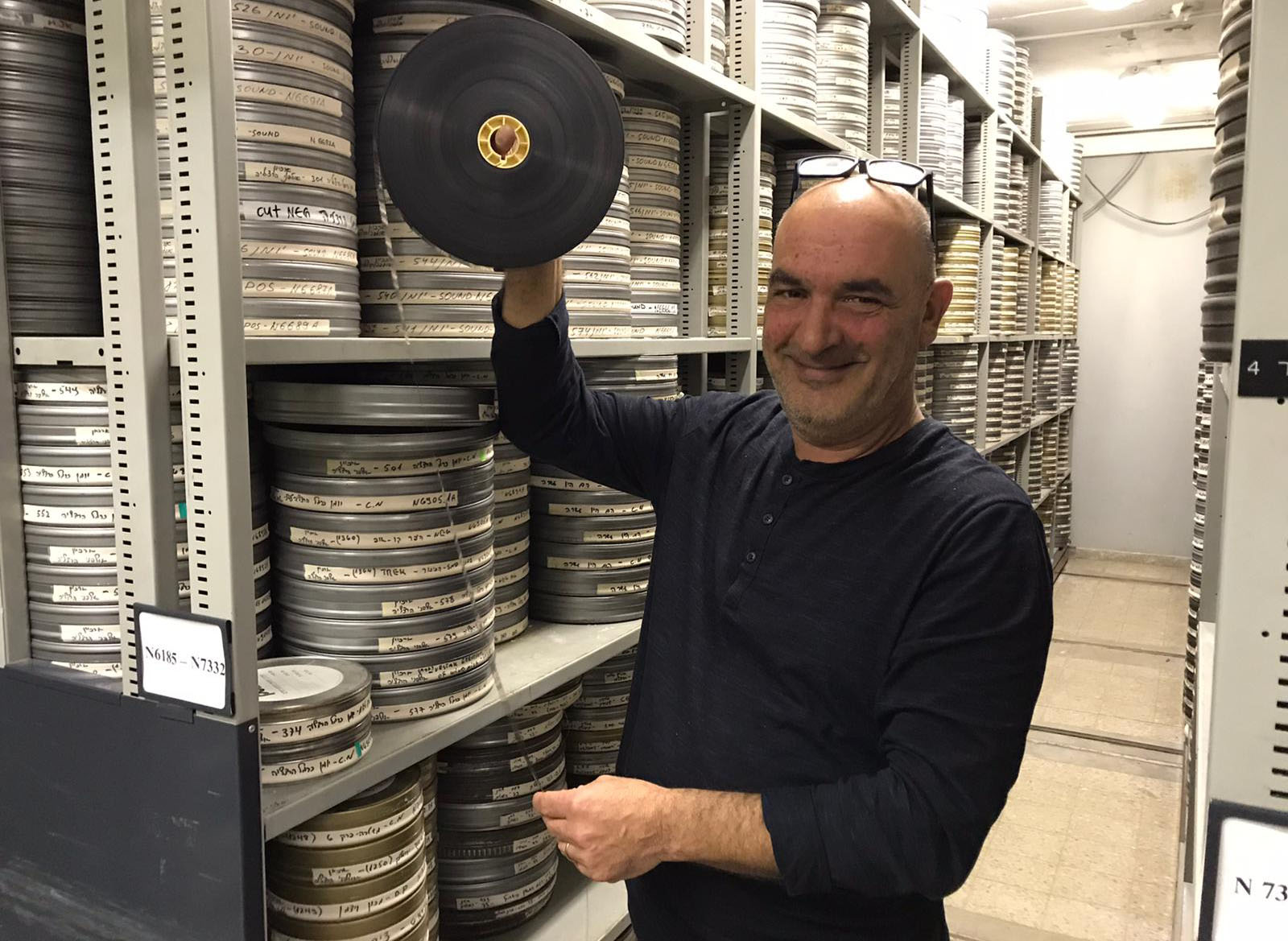Arts
Film
Preserving the Reel Israel

Stored on the shelves of the Israel Film Archive at the Jerusalem Cinematheque is a reel with one of the oldest known films made in the region: an 1896 short produced by early film pioneers, and brothers, Auguste and Louis Lumière. The short shows street scenes from Ottoman-era Jaffa, Jerusalem and Bethlehem with Jews, Arabs and Christians walking side by side, each in their distinctive garb.
This and many other films set in the Land of Israel are now accessible to viewers online, part of the archive’s collection of over 5,000 hours of audiovisual works available for streaming either free of charge or for a small fee, depending on the film. The searchable database is part of an ambitious $6.78 million project begun several years ago to restore and digitize the archive’s entire collection.
“Films were made to be seen, not to be stored as a byte on a server or in a metal can,” said Meir Russo, the archive’s director and head of the digitization project.
The archive is comprised of newsreels of major and minor events, documentaries, propaganda advertisements and feature films—almost every film shot in Israel between the late 19th century and today, including blockbusters from famed Israeli directors like Joseph Cedar and Avi Nesher.
Another early gem in the collection is the 1913 silent film, The Life of the Jews in Palestine. Created by outspoken Zionist Noah Sokolovsky, it is not only an historical look at the pioneers of the First and Second Aliyahs, but also something of a travelogue as it follows the pioneers from Odessa to Palestine, akin to today’s promotional spots on the beauty of Israeli landscape and culture. The film captures scenes of everyday life from 100-plus years ago: schoolchildren walking two abreast in orderly lines; farmers manually spraying crops or plowing fields with draft horses; holy sites, including a crowded prayer scene at the Western Wall; even an art class featuring Boris Schatz, founder of the Bezalel Academy of Arts and Design in Jerusalem. The film itself has an illustrious history. It premiered at the 11th Zionist Congress in Vienna, was shown around Russia and Europe, and then went missing for some 80 years before a print was discovered in 1997 at France’s national film archives, the Centre Nationale de la Cinematographie.
The collection also includes home movies amusing to modern eyes, such as a clip of a family enjoying a dip in the Yarkon River in the 1920s. Today, the river is marked with signposts warning passers-by not to enter the polluted waters.
“What is especially interesting is to see the development of the country,” noted Russo. “You see the change.”
Lovers of classic Zionist feature films will appreciate the opportunity to rewatch the 1964 comedy Sallah Shabati, about a Mizrachi Jewish immigrant’s attempts to settle in Israel. Starring Chaim Topol, the film pokes fun at political and social stereotypes of the time.
Another must-watch is the award-winning 1992 drama, Life According to Agfa, still considered one of Israeli cinema’s most important films for its portrayal of a country on the edge. It was written and directed by Assi Dayan, son of former Defense Minister Moshe Dayan.
Viva Sarah Press is a veteran journalist who writes and speaks about the innovations taking place in Israel and beyond. She lives with her family in Tel Aviv.










 Facebook
Facebook Instagram
Instagram Twitter
Twitter
Leave a Reply